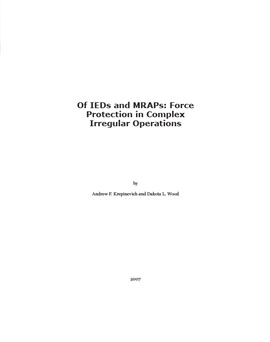
Simple solutions to complex problems are inherently attractive and almost always wrong. So it is with the Pentagon’s recent decision to enter into “crash” production of Mine Resistant Ambush Protected armored vehicles, or MRAPs. Political and military leaders are currently grappling with this problem, which can be summed up as: How much to invest in a new system that appears to provide enhanced protection for troops against the most common, lethal threat in Iraq, without undermining either the ability of the force to conduct the current mission set before it, or the ability to remain effective across the range of missions and operating environments it will also have to be ready for in the years ahead?
This paper’s purpose is not to offer a defi nitive answer to this question; rather, it seeks to ensure that the issues relevant to arriving at a good decision are given proper consideration. Those readers seeking a specifi c recommendation regarding the overall mix of armored vehicles in the US military’s ground force structure will not fi nd it here.
However, those who are interested in how to think about the issue in their efforts to reach their own conclusions will hopefully fi nd what follows to be useful.



























